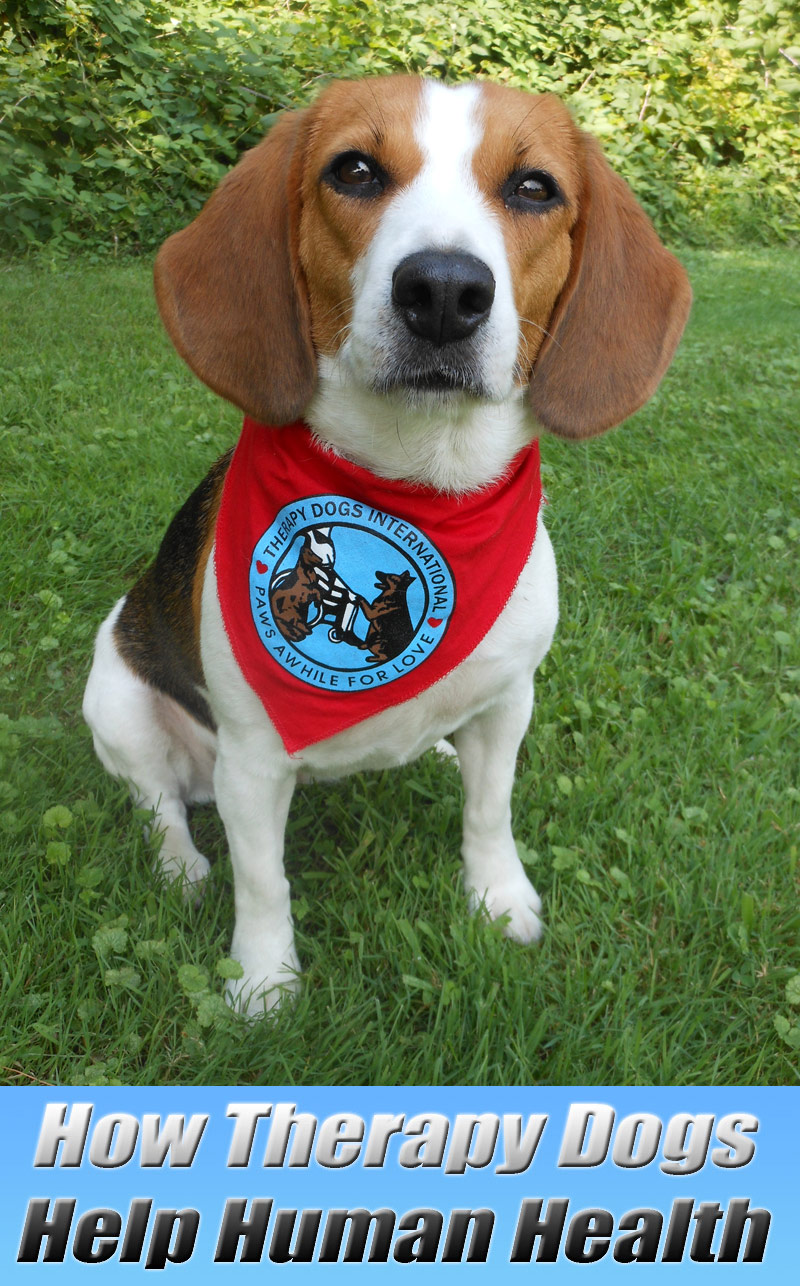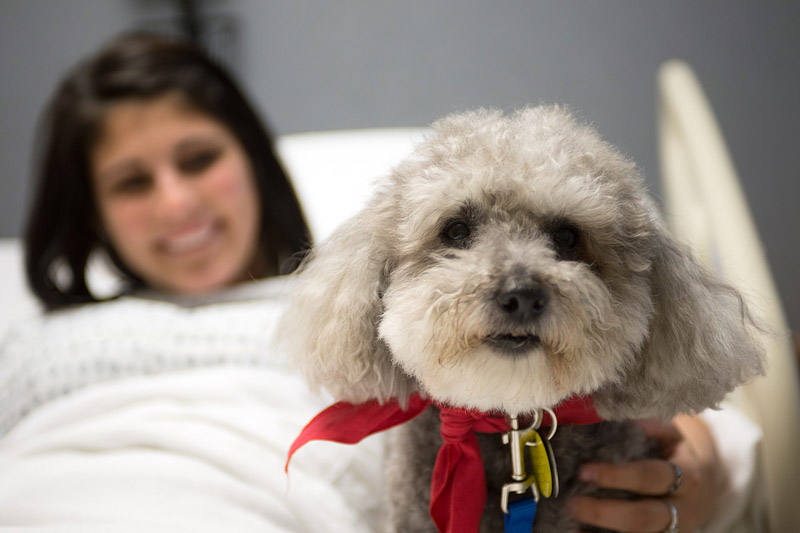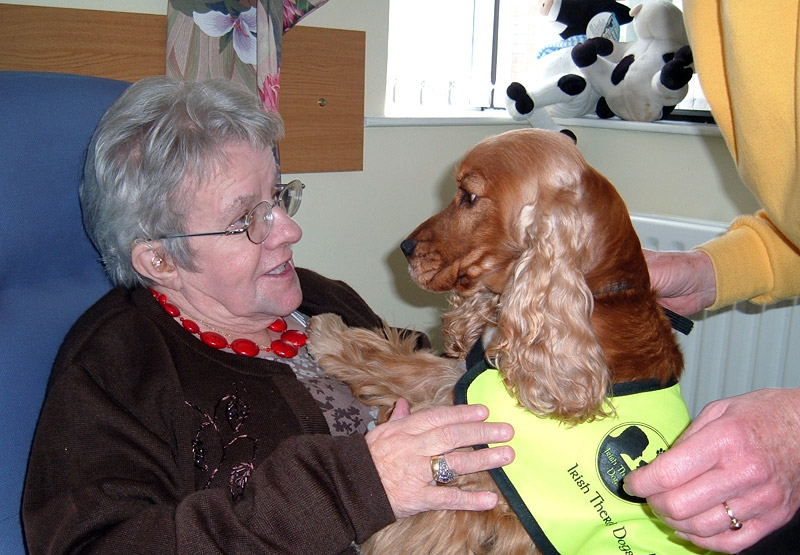
The accomplishments of some types of working dogs can be very tangible — for example, a guide dog leading his visually impaired partner though city streets, or search and rescue dogs who have a very visible role in the management of natural and man-made disasters. In fact, in the New York City area, the dogs of 9/11 have recently been honored with their own memorial statue for their contributions at Ground Zero.
The impact of specially trained therapy dogs on illness is less obvious, but no less important than the jobs of guide dogs and search and rescue dogs. While therapy dogs may not be for every patient or be of benefit in every case, studies show that canine therapy can potentially have a positive impact on human health. Here, I report on some compelling information that shows just how helpful canine animal-assisted therapy can sometimes be.
Quicker Recovery from Anesthesia

Having a seriously ill child is a parent’s worst nightmare, made worse by the need for general anesthesia and surgery. In a recent study conducted on patients in a pediatric surgery ward, children were randomly assigned to one of two groups. Half of the children received a visit from a therapy dog in the recovery room; the others did not. Those children receiving a 20-minute visit from a trained therapy dog recovered from anesthesia more quickly, became active more rapidly and showed a lower pain score than the children not receiving a therapy dog visit. Having a pooch to hug really can make a difference.
Pain Management Without a Pill?
Chronic pain debilitates and negatively impacts quality of life. In an outpatient adult pain clinic using a pain-scoring system for measuring pain, fatigue and emotional distress, patients could choose to wait for their appointment with a trained therapy dog or remain in the waiting room. Reported in the medical journal Pain Medicine, the results of this study found significant improvements in pain, mood and level of distress in those people who waited with the therapy dog. Nearly a quarter of those spending time with the therapy dogs showed a greater than or equal to two-point improvement in their pain scores, while only 4 percent of patients in the waiting room without a therapy dog showed a significant improvement.
A Dose of Dog for Everyone

An unanticipated finding of that Pain Medicine study was that the presence of the therapy dog also soothed the friends and family who accompanied the patient to the pain clinic! The clinic staff also reported less emotional distress when a therapy dog was in the facility. The positive effect of therapy dogs on medical staff was also corroborated by the results of another study performed in a pediatric medical ward. In that study, the pediatric nursing staff described the ward as a happier place and the work environment as more interesting when a therapy dog visit was scheduled. The nurses also genuinely looked forward to the dog’s visit.
Getting a Prescription Pup
If you or a family member is hospitalized and you think you might find a therapy dog visit beneficial, inquire about any animal-assisted therapy programs that might be available to you. Based on the research results I have shared here, you just might feel better, and there is a good chance the doctors and nurses will be happy to have Dr. Dog making rounds on their ward as well. Conversely, if you think your canine companion might have the personality to be a top-notch therapy dog, consider signing up for therapy dog training through your local organization, and maybe you and your companion can be a part of something good that can help others feel better.





Leave a Reply